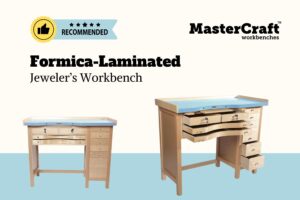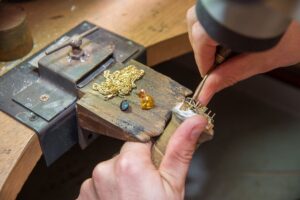The Jewelry Making Process: From Concept to Creation
Behind every beautiful piece of jewelry lies a detailed, multi-step process that requires creativity, precision, and craftsmanship. Whether the final product is a delicate pendant or a statement ring, each step is vital in turning raw materials into wearable art. Let’s explore the stages involved in making jewelry from scratch.
Design and Conceptualization
Every piece of jewelry begins with an idea. Whether it’s a custom design for a client or a new piece for a collection, the design process is the first and most important step. The jeweler or designer sketches the concept, often creating detailed drawings from various angles. Modern jewelers may also use Computer-Aided Design (CAD) software to create 3D renderings that can be tweaked and refined digitally.
Key elements to consider in the design stage:
Purpose: Is it for daily wear, a special occasion, or a symbolic piece like an engagement ring?
Materials: The selection of metals (gold, silver, platinum) and gemstones (diamonds, sapphires, etc.) that will be used.
Style: From minimalist designs to more ornate, intricate ones, the style sets the tone for the crafting process.
For more on jewelry design tools, check out this guide to CAD software for jewelers.
Material Selection
Once the design is finalized, the next step is to select the raw materials. Jewelers source precious metals like gold, silver, and platinum, along with gemstones or other materials, such as pearls or beads. Sustainability and ethical sourcing are increasingly becoming part of the material selection process, with more designers opting for recycled metals and conflict-free stones.
For a jeweler, understanding the properties of each material is crucial. For example:
Gold is known for its softness and malleability, making it ideal for intricate designs.
Platinum is denser and more durable, suited for rings or pieces that require strength.
Silver is highly reflective and affordable, making it popular for both luxury and fashion pieces.
Learn more about the different types of metals used in jewelry making.
Prototyping and Casting
If the design involves metal casting, a prototype is often made first. This is commonly done through the lost-wax casting method:
A wax model of the piece is created, either by hand or through 3D printing.
The wax model is then encased in a plaster-like substance, forming a mold.
Once hardened, the mold is heated to melt and drain the wax, leaving behind a cavity in the shape of the jewelry.
Molten metal is poured into the mold to form the piece.
Casting allows jewelers to reproduce intricate designs, especially when mass production or repeatable patterns are required.
Hand Fabrication
Not all jewelry is cast. Many artisans prefer to fabricate pieces by hand, which gives them greater control over the final design. Using tools like saws, hammers, and pliers, jewelers can:
Cut and shape metal into the desired form.
Solder or weld metal pieces together to form a cohesive design.
Engrave or texture the surface for added detail or uniqueness.
Hand fabrication is often used for one-of-a-kind pieces or custom designs. For more on fabrication techniques, visit this comprehensive guide on jewelry-making techniques.
Stone Setting
After the metalwork is complete, any gemstones or diamonds are carefully set into place. There are various techniques for setting stones:
Prong Setting: Stones are held in place by small metal prongs, allowing maximum light to pass through the gem.
Bezel Setting: The stone is enclosed in a metal rim, providing a secure and protective hold.
Pavé Setting: Multiple small stones are set close together, creating a surface of sparkling gems.
Channel Setting: Stones are placed in a channel between two metal bars, often used for rows of diamonds in a ring.
Stone setting requires precision, as any misalignment can affect the overall appearance and durability of the piece. Here’s a helpful overview of stone-setting techniques.
Polishing and Finishing
Once the piece is assembled and stones are set, it undergoes polishing to enhance its shine and smoothness. This process can be done by hand or with the help of machines, using polishing compounds and soft brushes. In some cases, jewelers may add textures or finishes, such as:
Matte Finish: A non-shiny, subtle texture.
Hammered Finish: A hand-textured surface that adds dimension and uniqueness.
High Polish: A mirror-like shine that reflects light and highlights the metal’s natural beauty.
For more on achieving the perfect finish, explore this guide to jewelry polishing techniques.
Quality Control and Inspection
Before a piece of jewelry is deemed ready for sale or delivery, it goes through a thorough quality inspection. Jewelers check for:
Proper alignment of stones and settings.
Secure soldering or welding of metal joints.
Flawless polishing without scratches or imperfections.
Comfort and wearability of the piece.
Learn more about quality control in jewelry making, and why it’s crucial for ensuring customer satisfaction.
Packaging and Presentation
Once the piece has passed the final inspection, it’s carefully packaged and presented to the customer. Whether it’s for a personal collection or a special occasion, the presentation is an important final touch. Jewelers often provide certificates of authenticity for gemstones and details about care instructions for longevity.
Conclusion
Jewelry making is an intricate process that combines artistry, craftsmanship, and technical skill. Whether the piece is created through casting, hand fabrication, or a mix of both, each stage in the process is crucial to achieving the perfect final product. From the initial design to the moment the finished piece is worn, the journey of jewelry creation is one of creativity, patience, and precision.
For more insights and resources on the jewelry-making process, explore these additional articles.
Browse Jeweler's Workbenches
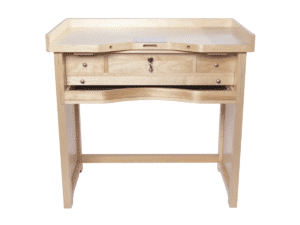
Featured
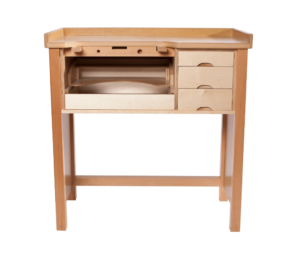
Small Workbenches
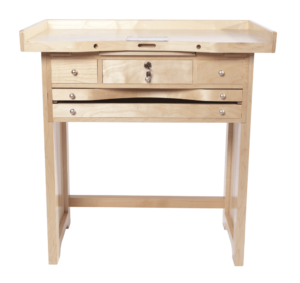
Small Workbenches

Small Workbenches


